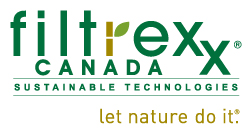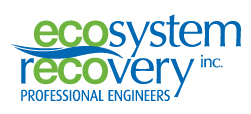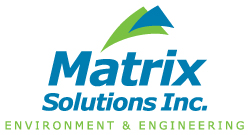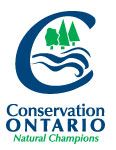Natural Channels - Linking Processes to Practice
The Natural Channels Conference is intended to explore the science and application of Natural Channel and stream corridor rehabilitation. Our understanding of the importance, complexity, and interconnectedness of watercourses, and their relationship with biological and ecological processes continues to evolve, leading to a growing emphasis on protecting Canada’s green infrastructure. The conference is part of a continuum of learning and advancement of the science and practice of channel rehabilitation in Ontario. This began in Ontario in the early 1990s and evolving in the USA, UK, Europe, Australia and elsewhere over the last 25-30 years. It seeks to further explore innovations in science in an effort to better understand the importance of streams and their corridors to the health of watersheds.
Over the course of two days, we will hear from practitioners, scientists, academics, and policy makers who can share their knowledge and innovation in order to deliver new ideas and approaches to problem solving. The conference is composed of International Keynote Speakers, Concurrent Sessions, Panels and Workshops, as well as a Poster Session. Our Wine and Cheese social event will offer opportunities for networking with a diverse group of attendees.
2016 Presentations Available for Download
 2016 Presentations Day 1
2016 Presentations Day 1
 2016 Presentations Day 2
2016 Presentations Day 2
Registration - Now Open
![]() Registration is now open! Submit your online registration by completing the following form.
Registration is now open! Submit your online registration by completing the following form.
See below for the registration rates and ensure you look over the Preliminary Program to choose which sessions you wish to attend.
Registration Rates
| Two Days | One Day | |||
| Early Rate (until August 15) |
Late Rate (starting August 16) |
Early Rate (until August 15) |
Late Rate (starting August 16) |
|
| Regular | $300 | $400 | $200 | $250 |
| NGO | $200 | $200 | $125 | $125 |
| Student | $150 | $150 | $100 | $100 |
 Additional Registration Information
Additional Registration Information
When Does Registration Open?
Registration is scheduled to open in late Spring. Sign up for the mailing list to be notified once registration is open.
About the Registration Rates
All registrations received after Wednesday, September 21, 2016 will be processed ON-SITE. Space is not guaranteed for onsite/walk-in registrations.
NGO's (Non-Governmental Organization) and students carrying at least 50% of a full-time course load qualify for half-price registration rates. Students must include their student identification number on the registration form, where indicated, in order to receive a discounted rate.
All rates quoted are in CDN funds and are subject to 13% HST.
Space Availability
Seating at all concurrent sessions is limited and will be assigned on a first-come, first-served basis as registrations are received. Session substitutions will only be allowed if space permits.
Attendee Substitutions
Attendee Substitutions are allowed by contacting the Registrar prior to the symposium.
What Your Registration Includes
Your 1 or 2-Day Package includes admittance to all Conference sessions, lunch and coffee breaks for the day on which you are registered.
Contact Information
General inquiries, contact:
Karen Anderson, Conference Coordinator
Phone: 1-888-274-1364 ext. 103
E-mail: karen@allsetinc.com
Accommodations
![]() A discounted block of rooms have been reserved at the Marriott Gateway on the Falls, Niagara Falls. The single or double occupy rates of $139.00 for a 'Cityview' and $159.00 for a 'Fallsview' are available for Sunday September 25th and Monday September 26th. There is a $25.00 additional cost per person for triple and quadruple accommodations.
A discounted block of rooms have been reserved at the Marriott Gateway on the Falls, Niagara Falls. The single or double occupy rates of $139.00 for a 'Cityview' and $159.00 for a 'Fallsview' are available for Sunday September 25th and Monday September 26th. There is a $25.00 additional cost per person for triple and quadruple accommodations.
For delegates wanting to reserve for Saturday September 24th, please call the in-house hotel reservation office at 1‑800‑618‑9059.
Book by September 6th to reserve your room at the discounted rate! Book your group rate for Natural Channel Systems Conference.
Please note: 'Cityview' rooms are now sold out, however a number of 'Fallsview' rooms are still available. As a result of 'Cityview' rooms being sold out, a limited number of 'Superior Fallsview' rooms have been added and can now be booked at the discounted rate of $189.00 per night. Please contact the Reservation Desk at 1‑800‑618‑9059 if you wish to book a 'Superior Fallsview' rooms.
Living Lab
![]() New to this year’s Conference is the creation of a Living Lab space to provide an enrichment experience to the new as well as the experienced professional. This space is intended to offer attendees an opportunity to view projects, interact with displays and share experiences.
New to this year’s Conference is the creation of a Living Lab space to provide an enrichment experience to the new as well as the experienced professional. This space is intended to offer attendees an opportunity to view projects, interact with displays and share experiences.
You Are Invited to Submit
Living Lab - Digital Space: Project Showcase
As part of the Living Lab Space, we are pleased to announce our digital component. Here, conference registrants are invited to submit examples of completed stream restoration projects. Projects will be compiled into a Story Map format, which will cycle through on a large screen throughout the course of the conference. The intent is to afford registrants an opportunity to showcase interesting projects that have been carried through to completion.
 Submission Requirements and Instructions:
Submission Requirements and Instructions:
Microsoft Word document containing:
- Project Name
- Company or Organization Affiliation(s)
- Month and year constructed
- Brief description of the project (max 150 words)
- Location in lat and long format only (e.g. 43.858691, -79.314211)
JPG files of photos or graphics:
Maximum of 5 photos. Typical set of photos might include photos before, during and after construction.
- Include project name in JPG file name
- Embed a one-line description in the details property of the JPG file (see image below)
How to Submit
Please zip submission files (Word document and images) and email to livinglab@naturalchannels.ca for review by September 20, 2016. Questions should be directed to Hazel Breton at hbreton@toronto.ca.
Program at a Glance
 Pre-Conference - Sunday, September 25
Pre-Conference - Sunday, September 25
8:00 PM – 10:00 PM |
Ice Breaker Reception Registration will be open |
 Day 1 - Monday, September 26
Day 1 - Monday, September 26
7:15 AM – 9:15 AM |
Registration Refreshments |
| 8:00 AM – 9:00 AM | Optional Training Workshops: Workshop 1 - A Primer of Key Disciplines in NCS Applications Workshop 2 - Best Management Practices in Design and Construction |
9:15 AM – 10:30 AM |
Welcome, Introductions and Opening Remarks (Held in the Plenary Hall) Master of Ceremonies Serge Metikosh Keynote Speaker Colin Thorne |
10:45 AM – 12.15 PM |
Concurrent Sessions M1A / M1B / M1C / M1D |
12:15 PM – 1:15 PM |
Luncheon – Part I Held at Milestones (Located in hotel) |
1:15 PM – 2:00 PM |
Luncheon – Part II Luncheon Keynote Speaker Chester Watson (Held in the Plenary Hall) |
2:15 PM – 3:45 PM |
Concurrent Sessions M2A / M2B / M2C / M2D |
3:45 PM – 4:15 PM |
Refreshment Break with Exhibitors |
4:15 PM – 5:45 PM |
Concurrent Sessions M3A / M3B / M3C / M3D |
5:45 PM – 7:15 PM |
Wine and Cheese Networking Reception (Held in Exhibitors’ Gallery) |
 Day 2 - Tuesday, September 27
Day 2 - Tuesday, September 27
7:00 AM – 8:30 AM |
Registration Refreshments |
8:30 AM – 10:00 AM |
Concurrent Sessions T1A / T1B / T1C / T1D |
| 10:00 AM – 10:30 AM | Refreshment Break with Exhibitors |
| 10:30 AM – 12:00 PM | Concurrent Sessions T2A / T2B / T2C / T2D |
12:00 PM – 1:00 PM |
Luncheon – Part I Held at Milestones (Located in hotel) |
1:00 PM – 2:00 PM |
Luncheon – Part II Master of Ceremonies Serge Metikosh Keynote Speaker Marc Gaboury |
| 2:00 PM – 3:30 PM | Concurrent Sessions T3A / T3B / T3C / T3D |
| 3:30 PM – 4:00 PM | Refreshment Break with Exhibitors |
| 4:00 PM – 5:15 PM | Discussion Panel (Held in the Plenary Hall) |
| 5:15 PM – 5:30 PM | Closing Plenary and Wrap-Up (Held in the Plenary Hall) Master of Ceremonies Serge Metikosh |
Preliminary Program
The Preliminary Program is now available for review in HTML or PDF format. Please note the Preliminary Program is subject to change.
- Preliminary Program [
PDF]
Day 1
 - Optional Training Workshops [8:00 AM - 9:00 AM]
- Optional Training Workshops [8:00 AM - 9:00 AM]
 Workshop 1 - A Primer of Key Disciplines in NCS Applications
Workshop 1 - A Primer of Key Disciplines in NCS Applications
This training session, given by experienced professionals, will provide an overview of the contributions, concepts, and considerations that each of the key disciplines provide in natural channel system applications, and their integration.
Trainers:
Biology: Jack Imhof (Trout Unlimited)
Geomorphology: Shelley Gorenc (Beacon Environmental)
Engineering: Wolfgang Wolter (Ecosystem Recovery)
 Workshop 2 - Best Management Practices in Design and Construction
Workshop 2 - Best Management Practices in Design and Construction
This training session, given by experienced professionals, will provide an overview of best management practice regarding vertical and horizontal channel controls/processes and key aspects of the construction process that should be considered in NCS applications.
Trainers:
Design: Bill Annable (University of Waterloo)
Construction: Harry Reinders (R&M Construction)
 - M1 Sessions [10:45 AM - 12:15 PM]
- M1 Sessions [10:45 AM - 12:15 PM]
 M1A - Innovation
M1A - Innovation
| M1A Presentation 1 | |
Title |
Streamline Your Design With Civil3D |
Speaker |
Randy Brook and Hamish Trenam |
Affiliation |
Stantec Consulting Ltd. |
Abstract |
|
| M1A Presentation 2 | |
Title |
Innovative Stream Restoration Techniques: Dam Removal, Channel Reconstruction, and Large Wood Placement in the Pacific Northwest Region of the US |
Speaker |
Dr. Janine Castro |
Affiliation |
US Fish and Wildlife Service and NOAA National Marine Fisheries Service |
Abstract |
Not yet available |
| M1A Presentation 3 | |
Title |
The Use of Unmanned Aerial (UAV) Technologies to Detect Groundwater Inputs in the Credit River |
Speaker |
Ken Glasbergen |
Affiliation |
CrossWind Geomatics. Inc. |
Abstract |
|
 M1B - Southern Ontario Procedures
M1B - Southern Ontario Procedures
| M1B Presentation 1 | |
Title |
Meander Belt Width Procedures: Developing a Regional Model for Southern Ontario |
Speaker |
Imran Khan |
Affiliation |
Beacon Environmental Limited |
Abstract |
|
| M1B Presentation 2 | |
Title |
Regional Reference Curves for Small and Medium Watercourses in Southern Ontario |
Speaker |
Trevor Chandler |
Affiliation |
Stantec Consulting Ltd. |
Abstract |
|
| M1B Presentation 3 | |
Title |
Limitations and Misuse of the Rapid Geomorphic Assessment for Preliminary Characterization of Channel Stability |
Speaker |
Robin McKillop |
Affiliation |
Palmer Enviromental |
Abstract |
|
 M1C - Historical Context
M1C - Historical Context
| M1C Presentation 1 | |
Title |
Twenty Plus Years Since the Rural Ontario Data Base and Relationships was Produced. Looking Back to Look Forward |
Speaker |
Bill Annable |
Affiliation |
University of Waterloo |
Abstract |
Not yet available |
| M1C Presentation 2 | |
Title |
Applied Fluvial Geomorphology: Where Have We Come from, Where Do We Go? |
Speaker |
Dr. Roger TJ Phillips |
Affiliation |
Western University and Aquafor Beech Limited |
Abstract |
|
| M1C Presentation 3 | |
Title |
The Evolution of Natural Channel Design Practice in the Maritimes: From Digger Logs to Holistic Channel Realignments |
Speaker |
John Parish |
Affiliation |
Matrix Solutions Inc. |
Abstract |
|
 M1D - Climate Change
M1D - Climate Change
| M1D Presentation 1 | |
Title |
Pilot Study - Environmental and Infastructure Vulnerabilities to Climate Change - Implications for Natural Channels |
Speaker |
Karen Hofbauer |
Affiliation |
Matrix Solutions Inc. |
Abstract |
|
| M1D Presentation 2 | |
Title |
Freedom Space for Rivers: An Economical Approach to Sustainable Management in a Changing Climate |
Speaker |
Joanna Eyquem |
Affiliation |
AECOM |
Abstract |
|
| M1D Presentation 3 | |
Title |
State of Climate Change Science and Practice in the Great Lakes Basin: A Focus on Climatology, Hydrological and Ecological Effects |
Speaker |
Edmundo Fausto |
Affiliation |
Ontario Climate Consortium - Toronto and Region Conservation Authority |
Abstract |
Not yet available |
 - M2 Sessions [2:15 PM - 3:45 PM]
- M2 Sessions [2:15 PM - 3:45 PM]
 M2A - Natural Resources: Challenges and Opportunities
M2A - Natural Resources: Challenges and Opportunities
| M2A Presentation 1 | |
Title |
Pipeline Associated Watercourse Crossings Fisheries Self- Assessment Tool |
Speaker |
Lucas Warner |
Affiliation |
Stantec Consulting Ltd. |
Abstract |
|
| M2A Presentation 2 | |
Title |
Once Upon a Gravel Pit: Reconnecting Floodplain through Aggregate Extraction |
Speaker |
Crystal Allan |
Affiliation |
Grand River Conservation Authority |
Abstract |
|
| M2A Presentation 3 | |
Title |
Treatments to Mitigate Aquatic Habitat Impacts Associated with Land and Resource Developments |
Speaker |
Marc Gaboury |
Affiliation |
LGL Limited |
Abstract |
Not yet available |
 M2B - Tools
M2B - Tools
| M2B Presentation 1 | |
Title |
The Science and Practice of Erosion Threshold Theory in Applied Geomorphology |
Speaker |
Dr. Roger TJ Phillips |
Affiliation |
Western University and Aquafor Beech Limited |
Abstract |
|
| M2B Presentation 2 | |
Title |
The Applicability of Using Fractional Bedload Transport Modelling as a Tool to Predict Geomorphic Change: A Novel Framework for Practitioners Using Commony Available Data |
Speaker |
Jeff Hirvonen |
Affiliation |
GeoProcess Research Associates and University of Waterloo |
Abstract |
|
| M2B Presentation 3 | |
Title |
A Tool to Optimize Understanding of Hydromorphological Charactersitics for French River Management and Restoration (CARHYCE) |
Speaker |
Frederic Gob |
Affiliation |
Université Panthéon-Sorbonne, Paris |
Abstract |
|
 M2C - Habitat Banking
M2C - Habitat Banking
| M2C Presentation 1 | |
Title |
Proponent-Led Habitat Banking |
Speaker |
Brent Valere |
Affiliation |
Fisheries and Oceans Canada |
Abstract |
|
| M2C Presentation 2 | |
Title |
Regulatory Approvals for Stream Restoration - Two Approaches to DFO Authorization |
Speaker |
Jessica Kellerman |
Affiliation |
City of Waterloo |
Abstract |
|
| M2C Presentation 3 | |
Title |
Recreational Fisheries Conservation Partnerships Program |
Speaker |
Cynthia Mitton-Wilkie |
Affiliation |
Fisheries and Oceans Canada |
Abstract |
|
 M2D - Monitoring - TRCA
M2D - Monitoring - TRCA
| M2D Presentation 1 | |
Title |
Evaluating the Effectiveness of Stream Rehabilitation Projects: Lessons Learned from 10 Years of Monitoring |
Speaker |
Dean Young |
Affiliation |
Toronto and Region Conservation Authority |
Abstract |
|
| M2D Presentation 2 | |
Title |
Temporal Changes in Terrestrial Biota Observed through Toronto and Region Conservation Authority’s Natural Channel Design Monitoring Program 2-14 Year Post Restoration |
Speaker |
Lyndsay Cartwright |
Affiliation |
Toronto and Region Conservation Authority |
Abstract |
|
| M2D Presentation 3 | |
Title |
Evaluating the Effect of Natural Channel Design on Fish and Benthic Macroinvertebrate Communities |
Speaker |
Raymond Biastoch |
Affiliation |
Toronto and Region Conservation Authority |
Abstract |
|
 - M3 Sessions [4:15 PM - 5:45 PM]
- M3 Sessions [4:15 PM - 5:45 PM]
 M3A - In Stream Techniques
M3A - In Stream Techniques
| M3A Presentation 1 | |
Title |
Evaluating Stream Restoration Designs with Engineered Log Jams in Experimental River Channels |
Speaker |
Michael S. Gallisdorfer |
Affiliation |
University at Buffalo |
Abstract |
|
| M3A Presentation 2 | |
Title |
The “Threshold” of Habitat: Spawning Salmon in a Restored Threshold Channel |
Speaker |
Jeff Muirhead |
Affiliation |
Stantec Consulting Ltd. |
Abstract |
|
| M3A Presentation 3 | |
Title |
2-D Hydraulic of Proposed Fish Ramp to Design for Fish Passage Potential |
Speaker |
Bradley Burrows |
Affiliation |
Ecosystem Recovery Inc. |
Abstract |
|
 M3B - Approaches
M3B - Approaches
| M3B Presentation 1 | |
Title |
A Process-Based Approach for Proposing Ecological Flows for Geomorphic Purposes |
Speaker |
Ashraf Zaghal |
Affiliation |
MMM Group |
Abstract |
|
| M3B Presentation 2 | |
Title |
Engineering Design Meets Geomorphic Design |
Speaker |
Steve Braun |
Affiliation |
Matrix Solutions Inc. |
Abstract |
|
| M3B Presentation 3 | |
Title |
Restoring Rivers as Part of Flood Risk Management - Recent Experience Gained from Projects in Scotland and England |
Speaker |
Colin Thorne |
Affiliation |
Nottingham University |
Abstract |
Not yet available |
 M3C - Fish Habitat
M3C - Fish Habitat
| M3C Presentation 1 | |
Title |
Changes in Fisheries Act, Policy and Review Process |
Speaker |
Thomas Hoggarth |
Affiliation |
Fisheries and Oceans Canada |
Abstract |
|
| M3C Presentation 2 | |
Title |
Fish Habitat Offsetting in Pristine Wilderness: Regulatory and Design Challenges |
Speaker |
Heather Amirault and David Luzi |
Affiliation |
Stantec Consulting Ltd. |
Abstract |
|
| M3C Presentation 3 | |
Title |
Brook Trout Creek Restoration under Challenging Conditions |
Speaker |
Laura Lawlor |
Affiliation |
GHD Limited |
Abstract |
|
 M3D - Monitoring 2
M3D - Monitoring 2
| M3D Presentation 1 | |
Title |
Assessment of the Performance of a Riffle- Pool Restoration Project over Two Years of Floods Using Radio Frequency Identification (RFID) |
Speaker |
Bruce MacVicar |
Affiliation |
Unviersity of Waterloo |
Abstract |
|
| M3D Presentation 2 | |
Title |
Long-Term Erosion Monitoring on Niagara Escarpment Watercourses |
Speaker |
Anna C.J. Howes |
Affiliation |
Aquafor Beech Ltd |
Abstract |
|
| M3D Presentation 3 | |
Title |
How Dynamic Are Our Streams? How Stable Are Our Designs? |
Speaker |
John Parish |
Affiliation |
Matrix Solutions Inc. |
Abstract |
|
Day 2
 - T1 Sessions [8:30 AM - 10:00 AM]
- T1 Sessions [8:30 AM - 10:00 AM]
 T1A - Biology
T1A - Biology
| T1A Presentation 1 | |
Title |
Restoring Ecological Functions – TUC Loweville Project |
Speaker |
Jack Imhof |
Affiliation |
Trout Unlimited |
Abstract |
Not yet available |
| T1A Presentation 2 | |
Title |
First Nations Engagement in Developing and Rehabilitating Watersheds - Natural Channels |
Speaker |
Jon Bisset |
Affiliation |
Canadian Columbia River Inter-tribal Fisheries Commission |
Abstract |
Not yet available |
| T1A Presentation 3 | |
Title |
Fish, Benthic Insects, and Trees of Riparian Ecosystems Mexico’s Northeastern Rio San Juan |
Speaker |
Jose Navar |
Affiliation |
Tecnologico Nacional de Mexico |
Abstract |
|
 T1B - Case Studies 1
T1B - Case Studies 1
| T1B Presentation 1 | |
Title |
How to Communicate a Natural Channel Design Effectively |
Speaker |
Sarah Matchett |
Affiliation |
Conservation Halton |
Abstract |
|
| T1B Presentation 2 | |
Title |
Little Stewart Creek Abstract |
Speaker |
Brandon Spaugh |
Affiliation |
North State Enviromental |
Abstract |
|
| T1B Presentation 3 | |
Title |
Buckhorn Creek: Removal of an Old Low Head Hydroelectric Project and Restoration of the Creek on the Floor of the Drained Reservoir |
Speaker |
Darrell Westmoreland |
Affiliation |
North State Environmental |
Abstract |
|
 T1C - Agricultural Drains 1
T1C - Agricultural Drains 1
| T1C Presentation 1 | |
Title |
Application of Natural Channel Design (NCD) Principles in Agricultural Drainage |
Speaker |
Scott Robertson |
Affiliation |
Stantec Consulting Ltd. |
Abstract |
|
| T1C Presentation 2 | |
Title |
Using a Systematic Approach to Natural Channel Designs and Agricultural Stewardship |
Speaker |
Sarah Fleischhauer |
Affiliation |
Maitland Valley Conservation Authority |
Abstract |
|
| T1C Presentation 3 | |
Title |
The Scott Drain – Integrating Natural Channel Design, Controlled Drainage and Agricultural Practices |
Speaker |
Geoff King |
Affiliation |
Maitland Valley Conservation Authority |
Abstract |
|
 T1D - Sediment Transport 1
T1D - Sediment Transport 1
| T1D Presentation 1 | |
Title |
River Bank Rehabilitation in Sandbed Channels |
Speaker |
Ahmed Siddiqui |
Affiliation |
GEO Morphix Ltd. |
Abstract |
|
| T1D Presentation 2 | |
Title |
Where Does All the Sediment Go? Modelling the Sixteen Mile Creek Sediment Plume |
Speaker |
Jeffrey Doucette |
Affiliation |
GHD Limited |
Abstract |
|
| T1D Presentation 3 | |
Title |
The Evolution of Gravel- Bed Morphology Due to Changing Hydrologic Regimes: A Case Study of an Urban Watercourse in Southern Ontario, Canada |
Speaker |
Ben Plumb |
Affiliation |
University of Waterloo |
Abstract |
|
 - T2 Sessions [10:30 AM - 12:00 PM]
- T2 Sessions [10:30 AM - 12:00 PM]
 T2A - Redside Dace
T2A - Redside Dace
| T2A Presentation 1 | |
Title |
Natural Channel Design for Redside Dace |
Speaker |
Shari Faulkenham |
Affiliation |
Matrix Solutions Inc. |
Abstract |
|
| T2A Presentation 2 | |
Title |
Implementation of Natural Channel Projects for Redside Dace; The Lessons Learned in Implementing Two Ecologically Different Projects |
Speaker |
Ralph Toninger |
Affiliation |
Toronto and Region Conservation Authority |
Abstract |
Not yet available |
| T2A Presentation 3 | |
Title |
Review of Redside Dace Habitat Corridor Realignments: Morphology, Sedimentology and Habitat Suitability within Aged Natural Corridor Designs |
Speaker |
Paul V. Villard |
Affiliation |
GEO Morphix Ltd. |
Abstract |
|
 T2B - Case Studies 2
T2B - Case Studies 2
| T2B Presentation 1 | |
Title |
Avonhead Creek Daylighting Project: Field Monitoring Techniques to Understand Watershed Hydrology |
Speaker |
Jayeeta Barua and Karen Chisholme |
Affiliation |
Credit Valley Conservation Authority |
Abstract |
|
| T2B Presentation 2 | |
Title |
Reconstruction of Amberlea Creek Valley Corridor to Protect Frenchman’s Bay Provincially Significant Wetland |
Speaker |
Robert Amos |
Affiliation |
Aquafor Beech Ltd |
Abstract |
|
| T2B Presentation 3 | |
Title |
The Do’s and Don’ts of Natural Channel Realignments |
Speaker |
Shawn R. Taylor |
Affiliation |
Ecosystem Works Inc. |
Abstract |
|
 T2C - Agricultural Drains 2
T2C - Agricultural Drains 2
| T2C Presentation 1 | |
Title |
Lost Land Reclamation in N.O.T.L Irrigation Channel |
Speaker |
Brandon Cormier |
Affiliation |
Devron Sales Ltd. |
Abstract |
|
| T2C Presentation 2 | |
Title |
Use of Drainage Act Assessments to Evaluate Costs of Rural Natural Channel Design |
Speaker |
Tim Brook |
Affiliation |
Ontario Ministry of Agriculture, Food and Rural Affairs |
Abstract |
|
| T2C Presentation 3 | |
Title |
Educating the Appropriate Target Audience for Stewardship Initiatives |
Speaker |
Jacqui Empson Laporte |
Affiliation |
Ontario Ministry of Agriculture, Food and Rural Affairs |
Abstract |
|
 T2D - Sediment Transport 2
T2D - Sediment Transport 2
| T2D Presentation 1 | |
Title |
Sediment Budget of the Rhine River for Fractions Clay/Silt Sand & Gravel |
Speaker |
Stefan Vollmer |
Affiliation |
Federal Institute of Hydrology (BfG), Koblenz, Germany |
Abstract |
|
| T2D Presentation 2 | |
Title |
The Quasi-Stability of Urban Stream Channels and the Importance in Bed Material Transport |
Speaker |
Bill Annable |
Affiliation |
University of Waterloo |
Abstract |
Not yet available |
| T2D Presentation 3 | |
Title |
Bedload Transport in Urbanized Creeks with and without Stormwater Management |
Speaker |
Elli Papangelakis |
Affiliation |
University of Waterloo |
Abstract |
|
 - T3 Sessions [2:00 PM - 3:30 PM]
- T3 Sessions [2:00 PM - 3:30 PM]
 T3A - Erosion and Sediment Control
T3A - Erosion and Sediment Control
| T3A Presentation 1 | |
Title |
Erosion and Sediment Control for Stream Restoration in Canada |
Speaker |
Harry Reinders |
Affiliation |
R & M Construction |
Abstract |
|
| T3A Presentation 2 | |
Title |
Erosion and Sediment Control for Stream Restoration in the US |
Speaker |
Darrell Westmoreland |
Affiliation |
North State Environmental |
Abstract |
|
| T3A Presentation 3 | |
Title |
Erosion and Sediment Control: Can We See the Forest for the Trees? |
Speaker |
Brad Fairley |
Affiliation |
Stantec Consulting Ltd. |
Abstract |
|
 T3B - Stormwater
T3B - Stormwater
| T3B Presentation 1 | |
Title |
Using Green Infrastructure to Meet Environmental Flow Needs |
Speaker |
Cassie Schembri1 and Wolfgang Wolter2 |
Affiliation |
1Credit Valley Conservation Authority / 2Ecosystem Recovery Inc. |
Abstract |
|
| T3B Presentation 2 | |
Title |
The Influence of Erosion Control Criteria on Stormwater Management Facility Design |
Speaker |
Aaron Farrell1 and John Parish2 |
Affiliation |
1Amec Foster Wheeler / 2Parish Aquatic Services |
Abstract |
|
| T3B Presentation 3 | |
Title |
Designing Stormwater Management Facilities to Minimize Downstream Watercourse Impacts |
Speaker |
Mike Gregory |
Affiliation |
Computational Hydraulics International |
Abstract |
|
 T3C - Modelling
T3C - Modelling
| T3C Presentation 1 | |
Title |
The Effects of Aquatic Vegetation Growth on Discharge Calculation in Natural Watercourses: A High-Resolution Study Featuring Novel Techniques |
Speaker |
Lorenzo Brignoli |
Affiliation |
University of Waterloo |
Abstract |
|
| T3C Presentation 2 | |
Title |
Using Two-Dimensional Hydraulic Modelling to Quantitatively Assess Fish Habitat Improvements |
Speaker |
Nick Hodges and Joanna Eyquem |
Affiliation |
AECOM |
Abstract |
|
| T3C Presentation 3 | |
Title |
Habitat Suitability Modelling |
Speaker |
Amanda McKay |
Affiliation |
Matrix Solutions Inc. |
Abstract |
|
 T3D - Urban Streams
T3D - Urban Streams
| T3D Presentation 1 | |
Title |
The Role of Eco- Hydraulics in the Restoration of a Degraded Urban Stream |
Speaker |
Ian D. Smith |
Affiliation |
Urban & Environmental Management Inc. |
Abstract |
|
| T3D Presentation 2 | |
Title |
Urban Channel Rehabilitation - a Fine Balance |
Speaker |
Jeff Daniel |
Affiliation |
GHD Limited |
Abstract |
|
| T3D Presentation 3 | |
Title |
TBD |
Speaker |
Chester Watson |
Affiliation |
Biedenharn Group |
Abstract |
Not yet available |
Sponsorships and Exhibiting
Network, Build Relationships, Share Information and Promote your Product or Service and Reinforce your Commitment to a Sustainable Future
![]() This event could not happen without the support of partners and exhibitors, and we would love for you to become involved. The conference format includes a pre-conference ice-breaker evening reception, two full days of concurrent sessions, panels and workshops, international keynote speakers, a poster session, a living lab, and an exhibit hall. We will hear from practitioners, scientists, academics, and policy makers who can share their knowledge and innovation in order to deliver new ideas and approaches to problem solving.
This event could not happen without the support of partners and exhibitors, and we would love for you to become involved. The conference format includes a pre-conference ice-breaker evening reception, two full days of concurrent sessions, panels and workshops, international keynote speakers, a poster session, a living lab, and an exhibit hall. We will hear from practitioners, scientists, academics, and policy makers who can share their knowledge and innovation in order to deliver new ideas and approaches to problem solving.
The following provides information on sponsorship and exhibiting opportunities. Have a look – no matter what your budget is, there is always a way to promote your organization to the many delegates, speakers and exhibitors and display your organization’s commitment to a sustainable future. I hope you will consider the 5th International Natural Channel Systems Conference for these opportunities.
If you have any questions, or are interested in learning more, please contact Karen Anderson Conference Coordinator 1‑888‑274‑1364 ext. 103 | karen@allsetinc.com
- Sponsorship and Exhibitor Packages [
Word /
PDF]
- Sponsorship and Exhibitor Registration Form [Word /
PDF]
- Exhibitors’ Guide [Word /
PDF]
- Floorplan [PDF]
List of Sponsors
River Level
Stream Level
See Exhibitors below
Wine & Cheese Reception Package
1 Day Luncheon Package
Refreshment Break Package
Cast-a-Line Package
List of Exhibitors
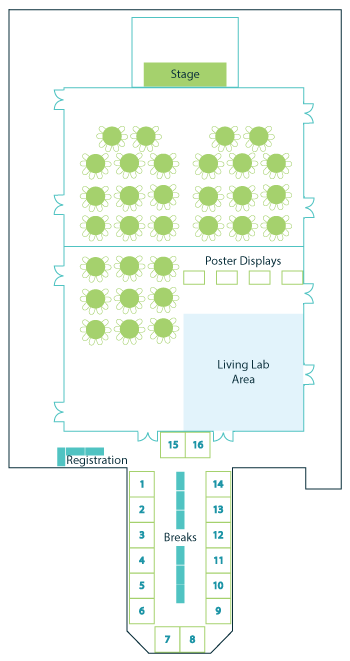
- North State Environmental
- Water’s Edge Environmental Solutions Team Ltd
- Ontario Ministry of Agriculture, Food and Rural Affairs (OMAFRA)
- R&M Construction
- Beacon Environmental Ltd.
- Filtrexx Canada Inc.
- GeoProcess Research Associates
- Canadian Water Resource Association (CWRA)
- Verbinnen's Nursery
- GEO Morphix Ltd.
- Aquafor Beech Ltd.
- AHYDTECH Geomorphic
- Hoskin Scientific Ltd.
- Ecosystem Recovery Inc.
- Matrix Solutions Inc.
- Terrafix Geosynthetics Inc.
Master of Ceremonies and Keynote Speakers
 Master of Ceremonies Serge Metikosh
Master of Ceremonies Serge Metikosh
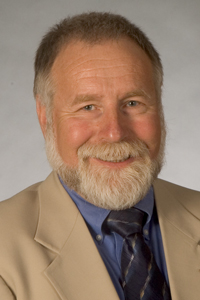 Serge Metikosh, is a Sr. Fish Habitat Biologist and President of Fish Habitat Solutions Inc. with more than 40 years of experience as a Fish and Fish Habitat Biologist and as an environmental impact assessment practitioner. Before starting Fish Habitat Solutions Inc. in 2012, Serge Metikosh was a Principal and Senior Fish Habitat Biologist at Golder Associates Ltd in Calgary for 15 years. As a consultant, Serge Metikosh focus was on his clients with technical and strategic advice for obtaining regulatory approval for various resource development projects throughout Canada. He has been Project Manager and Discipline Lead on numerous pipeline, oil and gas, coal mining and diamond mining and has prepared Environmental Impact Statements and applications for authorizations under the Fisheries Act. This work included issue scoping, the design and implementation of baseline studies, analysis and reporting, development of mitigation strategies, determination of residual effects and development of Offsetting Plans. In addition to being involved with projects in the preconstruction and approval stages, Mr. Metikosh also participated in their construction and operation phases. Mr. Metikosh’s work in relation to the construction and operation phases of resource development projects focused on the implementation of mitigation measures for various aspects of construction, implementation of No Net Loss Plans, as well as the design and implementation of effects monitoring studies required as conditions of regulatory approval.
Serge Metikosh, is a Sr. Fish Habitat Biologist and President of Fish Habitat Solutions Inc. with more than 40 years of experience as a Fish and Fish Habitat Biologist and as an environmental impact assessment practitioner. Before starting Fish Habitat Solutions Inc. in 2012, Serge Metikosh was a Principal and Senior Fish Habitat Biologist at Golder Associates Ltd in Calgary for 15 years. As a consultant, Serge Metikosh focus was on his clients with technical and strategic advice for obtaining regulatory approval for various resource development projects throughout Canada. He has been Project Manager and Discipline Lead on numerous pipeline, oil and gas, coal mining and diamond mining and has prepared Environmental Impact Statements and applications for authorizations under the Fisheries Act. This work included issue scoping, the design and implementation of baseline studies, analysis and reporting, development of mitigation strategies, determination of residual effects and development of Offsetting Plans. In addition to being involved with projects in the preconstruction and approval stages, Mr. Metikosh also participated in their construction and operation phases. Mr. Metikosh’s work in relation to the construction and operation phases of resource development projects focused on the implementation of mitigation measures for various aspects of construction, implementation of No Net Loss Plans, as well as the design and implementation of effects monitoring studies required as conditions of regulatory approval.
Prior to joining Golder Associates Ltd. in 1997 Mr. Metikosh was a Senior Fish Habitat Biologist with Fisheries and Oceans Canada (DFO) in Burlington Ontario where he was responsible of the delivery of the Fish Habitat Management program in Ontario. He is familiar with the regulatory requirements of the Fisheries Act, DFO’s Policy for the Management of Fish Habitat (including the guiding principle of No Net Loss) and the Canadian Environmental Assessment Act. He was also instrumental during his time with DFO in promoting and supporting major science-based guidance documents for watershed planning and the Natural Channel Systems Initiative. Mr. Metikosh has kept up to date with changes in Federal legislation that have taken place over the last several years and continues to provide advice to his clients on policy and implementation issues related to the fisheries protection provisions of the amended Fisheries Act. He has developed guidelines and procedural manuals for DFO and other government and industry organizations related to the Fisheries Act and CEAA.
 Keynote Speaker Colin Thorne
Keynote Speaker Colin Thorne
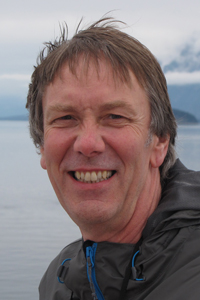 Colin Thorne is Professor and Chair of Physical Geography at the University of Nottingham. His educational background is in environmental sciences, civil engineering and physical geography. He has published 9 books and over 130 refereed journal papers and book chapters. To date, his work has nearly 8,000 citations, including one paper that has been cited over 800 times. He has an h-index of 44 and an i10-index of 99. During a career spanning four decades, he has held posts with UEA, Colorado State University, the University of London, USDA National Sedimentation Laboratory, USACE Waterways Experiment Station, NOAA Fisheries, and currently, the University of Nottingham. He is also a visiting Professor at Tsinghua University, China and an Affiliate Professor at both Portland State and Colorado State Universities.
Colin Thorne is Professor and Chair of Physical Geography at the University of Nottingham. His educational background is in environmental sciences, civil engineering and physical geography. He has published 9 books and over 130 refereed journal papers and book chapters. To date, his work has nearly 8,000 citations, including one paper that has been cited over 800 times. He has an h-index of 44 and an i10-index of 99. During a career spanning four decades, he has held posts with UEA, Colorado State University, the University of London, USDA National Sedimentation Laboratory, USACE Waterways Experiment Station, NOAA Fisheries, and currently, the University of Nottingham. He is also a visiting Professor at Tsinghua University, China and an Affiliate Professor at both Portland State and Colorado State Universities.
Professor Thorne is an environmental scientist with expertise in erosion, sediment transport and sedimentation in natural, modified and managed rivers, particularly with respect to the restoration of lost river functions, form and habitat. Internationally, Thorne’s experience with rivers extends to the basins of the Awash, Brahmaputra, Clutha, Columbia, Ganges, Mekong, Mississippi, Missouri, Parana, Salado, San Juan, Toutle, Yangtze, and Yellow Rivers, including research on a number of the alluvial deltas associated with these watercourses.
Through his research and consultancy work, Thorne has acquired particular skills in expert knowledge elicitation, stakeholder engagement, multi-criteria analysis and risk assessment (qualitative and quantitative). He is adept at working with stakeholders in the co-production of knowledge and delivering key messages to non-specialist decision makers in ways they understand and can act on, as evidenced by uptake in the UK of the principles of ‘natural flood management’ and ‘working with natural processes’. He currently leads a 9-university consortium investigating the generation of multiple flood risk benefits using Blue-Green infrastructure (http://www.bluegreencities.ac.uk/bluegreencities/index.aspx).
Keynote Speaker  Chester Watson
Chester Watson
 Chester Watson is an Emeritus Professor of Civil Engineering and presently is a private consultant. His career spans industrial water supply, construction of municipal water and waste water conveyance and treatment, teaching advanced level University classes, short courses and conference lectures pertaining to stream restoration. He has lectured in the U.S., U.K., Canada, and China, and has written numerous publications.
Chester Watson is an Emeritus Professor of Civil Engineering and presently is a private consultant. His career spans industrial water supply, construction of municipal water and waste water conveyance and treatment, teaching advanced level University classes, short courses and conference lectures pertaining to stream restoration. He has lectured in the U.S., U.K., Canada, and China, and has written numerous publications.
Dr. Watson is an engineer with experience in fluvial morphology, erosion, and sediment transport in modified and managed watersheds and streams. Much of his career has been spent in the study and rehabilitation of incised stream channels caused by watershed modification and channelization, and an equal portion of his career has been in the study of large rivers, particularly the Mississippi river. He is presently engaged with an advisory role in a physical model of the drainage from Mount St. Helens.
 Keynote Speaker Marc Gaboury
Keynote Speaker Marc Gaboury
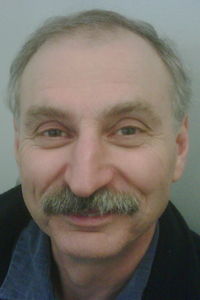 Marc Gaboury has over 28 years of experience in fish habitat restoration and enhancement, environmental impact assessment, and research. He has worked throughout British Columbia, Yukon, Canadian prairies and eastern United States. He has worked cooperatively on research, impact assessment and restoration projects with First Nations in Manitoba and British Columbia, including Cowichan Tribes, Cree, Haida, Lheidli T'enneh, Huu-Ay-Aht, T'Sou-ke, Nisga'a Lisims Government, Okanagan Nation Alliance, Nuu‑chah‑nulth, and Uchucklesaht First Nations.
Marc Gaboury has over 28 years of experience in fish habitat restoration and enhancement, environmental impact assessment, and research. He has worked throughout British Columbia, Yukon, Canadian prairies and eastern United States. He has worked cooperatively on research, impact assessment and restoration projects with First Nations in Manitoba and British Columbia, including Cowichan Tribes, Cree, Haida, Lheidli T'enneh, Huu-Ay-Aht, T'Sou-ke, Nisga'a Lisims Government, Okanagan Nation Alliance, Nuu‑chah‑nulth, and Uchucklesaht First Nations.
Marc has extensive experience in preparing integrated watershed restoration plans and the design and construction of fish habitat restoration structures. He has co-authored comprehensive restoration plans for the Okanagan, Englishman, Coldwater and Cowichan rivers in B.C. and designed specific treatments to restore stream habitats and watershed processes in another 58 watersheds in B.C. and 15 in Manitoba. He has also designed and constructed fishways for low head dams, as well as backwatering schemes for existing culverts to allow fish passage.
Marc is a Registered Professional Biologist with the College of Applied Biology of British Columbia.
Dates and Location
![]() The 5th International Conference on Natural Channel Systems takes place September 26th & 27th, 2016 at the Marriott Gateway on the Falls hotel in Niagara Falls, Ontario.
The 5th International Conference on Natural Channel Systems takes place September 26th & 27th, 2016 at the Marriott Gateway on the Falls hotel in Niagara Falls, Ontario.
Please note there are two Marriott hotels in Niagara Falls. Marriott Gateway on the Falls is located at 6755 Fallsview Blvd.
Niagara Falls Tourism Information
 Some Facts about Niagara Falls
Some Facts about Niagara Falls
The Educational
- The word Niagara comes from the word "onguiaahra" which means "a thundering noise".
- The Niagara Falls were created by glacier activity around 10,000 years ago
- Falls were formed when melting glaciers formed massive fresh-water lakes (the Great Lakes) one of which (Lake Erie) ran downhill toward another (Lake Ontario). The rushing waters carved out a river in their descent and at one point passed over a steep cliff like formation (the Niagara escarpment). From the original falls going over the Niagara Escarpment, the water began to wear its way back up the river. The path that it left is known today as the Niagara Gorge (a deeply-cut and very scenic river path).
- The Niagara Falls are made up of 3 waterfalls, the American Falls, the Bridal Veil Falls and the Horseshoe Falls.
- The Horseshoe Falls are the largest and the Bridal Veil Falls the smallest.
- The Niagara River flows at approximately 35 miles/hour (56.3 kilometers/hour).
- The Horseshoe Falls are 180 feet (57 meters) high and allow 6 million cubic feet (168,000 cubic meters) of water over the crestline every minute during peak daytime tourist hours (that is about a million bathtubs full of water every minute!).
- Although Niagara Falls isn’t the tallest waterfall in the world, it may be the fastest moving waterfall on the planet.
- The largest vertical drop is over 165 feet (50 metres).
- The 3 waterfalls combine to produce the highest flow rate of any waterfall on earth.
- Ice bridges form below the Falls when ice floes travel over the edge and collect at the base of the Falls.
- Currently, Niagara Falls wears its way back another approximately 1 foot/year.
- At the current rate of erosion, scientists believe that the Niagara Falls will be gone in around 50,000 years, luckily you still have time to see them!
- In March of 1848, the waters stopped flowing over Niagara's famous cliff when the Niagara River was plugged temporarily at the mouth of the river in Fort Erie, Ontario.
- Hydroelectric stations in the area divert less water during the summer when tourist numbers are high, ensuring a spectacular flow of water for visitors.
- Niagara Falls is not the highest waterfall in the world. There are actually about 500 waterfalls that are taller than Niagara. It’s actually the combination of height and large volume of water that makes Niagara Falls a great tourist destination.
Interesting Tidbits
- You are almost always guaranteed to see a rainbow if you’re on the Canadian side of the Falls.
- An "Old Scow" (a steel barge) remains stranded a few hundred meters above the Falls and has been marooned there since August 6, 1918 when a near tragedy was averted by three men who opened the dumping hatches of the barge to let water in and ground the out-of control boat.
- Niagara Falls is steeped in history and was one of the most popular and busiest New World visiting spot.
- The Niagara Falls are a source of hydropower, producing large amounts of electricity.
- Hydro Electricity generated in Niagara Falls at the Sir Adam Beck 1 and Sir Adam Beck 2 power stations from redirected waterflow serves the electrical needs of Southern Ontario and Western New York.
- Water is redirected from traveling over the Falls in order to drive large hydro-electric turbines that produce electricity for Southern Ontario and Western New York State.
- The Niagara Falls are visited by around 30 million people every year.
- The Niagara Falls State Park is the oldest state park in the United States (1885).
- About 28,000,000 (that’s 28 million!) liters of water travel down Niagara Falls every second.
- About 20% of the drinking water in the United States goes through and over Niagara Falls. Yup, you have most likely drank water that came from the Falls.
- Fish actually travel over the Falls. Don’t believe it? Visit the Cave of the Winds for $10. This place will prove the fact and you might even meet someone who has actually been struck by a fish on his journey down the Falls.
- Approximately 90% of the fish that travel down Niagara Falls survive. It is believed that the white foam from the rushing waters acts like a cushion for the fish traveling down the waters.
- One of the bloodiest battles of the War of 1812 took place on July 25, 1814 at Lundy's Lane in Niagara Falls, Ontario... A total of 7500 Americans and Canadians fought for six hours. At the end, 1,000 soldiers lay dead or wounded.
- One of the largest Butterfly Conservatories in North America has been added to Niagara's growing list of attractions.
Crazy Ones
- It is illegal (and not very smart) to go over the Niagara Falls.
- A number of people have tried it anyway, some survived, some were injured and some were killed.
- The first tightrope walker to cross the Niagara Falls did so in 1859.
- Blondin was a funambulist (tight-rope walker) who performed numerous crossings of the gorge in Niagara Falls during the mid 1800s.
- Blondin performed endless stunts on the high-wire, from crossing blindfolded to carrying a cooking stove and preparing an omelet on the high wire.
- Most spectacularly, was the stunt during which Blondin carried on his back Harry Colcord his 148-pound manager August 19, 1859.
- Annie Taylor "Queen of the Mist", a school teacher from Bay City Michigan was first person to travel over the Falls in a barrel on October 24, 1901.
- Since her feat, many stunt artists have challenged the mighty Falls usually in home-made barrel-like contraptions.
- In 1960, Roger Woodward was the boy who had survived a descent over the Falls after a boating accident above the Falls.
- In 2012 Nik Wallenda became the first person to cross the Niagara Falls by tightrope in 116 years. He did so after receiving permission from both the Canadian and United States governments, although he was required to carry his passport and present it on entry to the Canadian side of the falls.
- More recently, a couple of foolhardy individuals have attempted to survive a plunge over Niagara Falls in a kayak and a jetski - they both perished.
Information taken from the following sites:
https://www.niagarafalls.ca/living/about-niagara-falls/facts.aspx
http://www.sciencekids.co.nz/sciencefacts/earth/niagarafalls.html
http://www.justluxe.com/community/top-12-most-interesting-facts-about-niagara-falls_a_1822789.php
 Outside of the Conference
Outside of the Conference
Types of entertainment in the Niagara Region include - Events, Attractions, Winery and Brewery Tours, Night Clubs and Bars, Shopping, Movies, Restaurants, Sporting Events, Theatre, Fishing adventures, and more!
For more information, please visit following sites (this is not an exhaustive list, but will get you started):
Niagara Falls Tourism:
- Things to Do
- Coupons
- Clifton Hill:
Niagara Region Tourism:
- Niagara-on-the-Lake Tourism
- Tourism Niagara – Exploring Niagara Region
- Expedia.ca – Things to Do in Niagara
Niagara Falls – Zip line and Adventure Parks
- Canadian side - new this year – Zip line to the Falls
- US side – Niagara Falls adventure park
Niagara & Region - Wineries and Breweries
- Niagara Falls Wineries & Wine Tours
- Niagara Falls Tourism Wineries & Breweries
- Wineries of Niagara-on-the-Lake
- Niagara Wineries
- Winery Tours of Niagara
Niagara & Region Fishing Adventures
Niagara & Region Shopping
Join our Mailing List
![]() Sign up for our newsletter to be notified by email of the latest developments around the Natural Channel Systems Conference.
Sign up for our newsletter to be notified by email of the latest developments around the Natural Channel Systems Conference.
List of E-Newsletters
March 13, 2017 - Presentations Now Available for Viewing
September 12, 2016 - Reminders and Looking for Living Lab Submissions
August 12, 2016 - Registration - Early Bird Ending Soon!
July 5, 2016 - Registration Open and Preliminary Program Available
June 14, 2016 - Program and Registration Coming Soon
March 29, 2016 - Call for Abstracts, Sponsorships and Exhibits, and Accommodations Information
March 14, 2016 - Call for Abstracts Deadline Extended
February 25, 2016 - ACTION NEEDED - Subscribe to Our Mailing List
February 2, 2016 - Come Join Us as We Explore the Science and Applications of Natural Channel Systems Design
TRIECA 2017 Conference
 If you are interested in the Natural Channels Conference, you might want to check out the annual TRIECA Conference.
If you are interested in the Natural Channels Conference, you might want to check out the annual TRIECA Conference.
TRIECA is Canada's premier stormwater and erosion and sediment control conference and tradeshow bringing together some of North America's leading experts, influential leaders and distinguished research partners in one event. The 6th annual TRIECA Conference will be held March 22nd and 23rd, 2017 at the Pearson Convention Centre, Brampton ON. Check out www.trieca.com for more information.
TRIECA Call for Abstracts now open! Visit the website for more information.
Call for Abstracts - NOW CLOSED
Call for Abstracts Deadline Extended Until April 1st
![]() The steering committee is soliciting leading edge and topical oral and poster abstracts from practitioners, scientists, academics, and policy makers from across Canada and beyond who can share their knowledge and innovation in order to deliver new ideas and approaches to problem solving. We welcome applications in the following conference streams:
The steering committee is soliciting leading edge and topical oral and poster abstracts from practitioners, scientists, academics, and policy makers from across Canada and beyond who can share their knowledge and innovation in order to deliver new ideas and approaches to problem solving. We welcome applications in the following conference streams:
 Current Science and Understanding
Current Science and Understanding
- FLOW IN THE URBAN CONTEXT
Advancing the understanding of flooding and flood risk management in the context of urbanization and associated land use changes. Examples include: - Urban systems challenges – floodplain encroachment
- Headwater system protection / rehabilitation
- Landowner expectations
- Urban system connectivity and planning
- Revising historical trends – is expropriation needed?
- RIVER HYDRODYNAMICS AND SEDIMENT TRANSPORT
Science and applied research into river mechanics and response mechanisms to known disruptors of the balance between flow and sediment. - Sediment transport in response to hydromodification
- Time scale for rivers
- Restoring for sediment supply deficiencies
- Understanding erosion thresholds
- Understanding channel forming flow
- Impact of surrounding land use on sediment and erosion
- Laboratory study of the complex flow and sediment interactions
- Water quality considerations
- Technological advances
- ECOLOGICAL INTEGRATION
Integration of floodplain dynamics, specific to ecological function and the interactions between flow stage and ecological productivity. - Riparian zone interactions
- Effects of riparian vegetation on channel form and function
- Hyporheic zone exchange
- Designing to enhance stability
- Post construction monitoring of riparian vegetation
- Importance of choosing the right vegetation for the right spot at the right time
- Management of invasive species
- Effects of riparian areas on water quality
 Applied River Management and Rehabilitation
Applied River Management and Rehabilitation
- CONSTRUCTION
Insights and innovation from the perspective of the construction industry. Methods, lessons learned, opportunities and challenges that promote the successful implementation of construction projects in valley corridor settings.- Construction practices. Construction limitations
- Mitigating impacts during construction.
- Oil and gas – challenges working in / around watercourses
- Working in remote areas
- Erosion and sediment control BMPs
- Technological advances
- NATURAL CHANNEL DESIGN
Design tools, techniques and insights that advance the science and understanding of natural channel systems in the context of stream and river rehabilitation. - Technological advances
- Detailed design of aquatic habitat creation and enhancement
- Pre-design data requirements (biological, geomorphic, etc.) to suit NCD
- Cost comparisons integrating natural channel design (C/B analysis or value added approach)
- Maximizing what we can accomplish on a small budget
- Rural natural channel design challenges and opportunities
- Innovations in rehabilitation techniques
- Field methods
- Remote sensing for geomorphological purposes
- Flow training tools
- Precision technology for data collection
- Main channel and floodplain linkages
- AGRICULTURAL DRAINS
Advancing the understanding of landuse, hydrology, sediment supply, and the regulatory environment as it pertains to agricultural settings. - Challenges and opportunities in applying NCD principles to agricultural drains
- The economic case
- Impact of agricultural practices on the resiliency of agricultural drains
- Demonstration site promotion
- DAM REMOVAL
Dam removal examples and research into the evolutionary response of streams to dam construction and dam removal. - Stream response to low head dam removal
- New opportunities for Natural Channel Design in Dam removal
- Processes and permitting challenges specific to dam removal
- DESIGNING FOR FISH HABITAT (ECO-HYDRAULICS)
The integration of habitat-based design criteria into natural channel design projects - Technological advances
- Interrelation between hydraulics and fluvial geomorphology in natural channel design
- Water crossing design for fish passage
- Eco-hydraulic modeling
- Hydrology, water quality and habitat usage
- Using natural materials in construction and design
 Governance, Asset Management and Education
Governance, Asset Management and Education
- GOVERNANCE AND ADVOCACY
Challenges and opportunities generated by legislative and funding mechanisms in support of (or as a roadblock to) improvements natural channel science and application. - Innovative legislative drivers for successful projects
- Innovations in funding models benefiting natural systems
- Advocacy opportunities – NCI and beyond
- Permitting process
- Education and Awareness
- ASSET MANAGEMENT / ECONOMIC ANALYSIS
Insight into risk management surrounding waterways, as it applies to the built environment - Risk management
- Issues of liability
- What design storm is a new project supposed to withstand without damage. What is damage
- Changes to the insurance industry
 What We Have Learned / Knowledge Sharing
What We Have Learned / Knowledge Sharing
- MONITORING
Telling the story of restoration failure or success though post construction monitoring. - What’s been learned. Are we making a difference in urban systems
- What’s been learned. Are we making a difference in rural systems
- Geomorphic, biological, water quality
- Meta-analysis – will it be helpful?
- Remote sensing and precision data
- MOVING FORWARD
Knowledge gaps and opportunities for advancing knowledge of river science, ecology, engineering, land use planning as it pertains to successful project implementation. - Engineering for biologists 101
- Biology for engineers 101
- Remote sensing
All interested presenters are asked to complete the Call for Abstract form and submit by Friday, April 1, 2016 (previously Friday, March 11, 2016).
Please review the following 3 documents necessary to prepare your abstract submission.
- Overview [
Word /
PDF]
- Sub-topics [Word /
PDF]
- Abstract Template [Word]
Please send questions and completed abstracts to abstracts@naturalchannels.ca.
Contact Us
![]() Karen Anderson
Karen Anderson
Conference Coordinator, 5th International Conference on Natural Channel Systems
karen@allsetinc.com
1-888-274-1364 ext. 103
2010 Conference
To view the 2010 Natural Channel Systems conference website, please click here.









